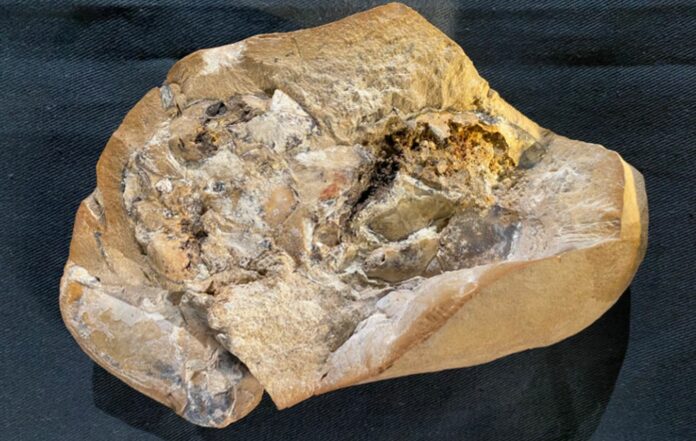The discovery of a 380-million-year-old heart, the oldest ever known, accompanied by a separate fossilized stomach, colon, and liver from an ancient jawed fish sheds new light on the evolution of our own anatomy.
The new study, which was just published in Science, discovered that the arrangement of the organs in the bodies of extinct arthrodires, a group of armored fishes that thrived during the Devonian period between 419.2 and 358.9 million years ago, is similar to that of modern sharks, providing important new evolutionary clues.
Kate Trinajstic, the John Curtin Distinguished Professor in the School of Molecular and Life Sciences at Curtin University and the Western Australian Museum, said the discovery was extraordinary since soft tissues of ancient organisms are rarely maintained, and 3D preservation is even rarer.
As a palaeontologist with more than 20 years of experience studying fossils, Professor Trinajstic commented, “I was truly amazed to find a 3D and beautifully preserved heart in a 380-million-year-old ancestor.”
These prehistoric fossils indicate that there may have been a greater evolutionary jump between jawed and jawless vertebrates than is commonly believed. Like modern sharks, these fish physically have their hearts in their jaws and under their gills.
This study depicts a sophisticated s-shaped heart in an arthrodire with two chambers, the smaller chamber sitting on top, in three dimensions for the first time.
These traits, according to Professor Trinajstic, were advanced in such primitive animals, providing a rare glimpse into how the head and neck region started to evolve to make room for jaws, a crucial stage in the evolution of our own bodies.
Professor Trinajstic remarked, “For the first time, we can see all the organs together in a primitive jawed fish, and we were especially surprised to learn that they were not so different from us.”
“However, there was one critical difference – the liver was large and enabled the fish to remain buoyant, just like sharks today. Some of today’s bony fish such as lungfish and birchers have lungs that evolved from swim bladders but it was significant that we found no evidence of lungs in any of the extinct armoured fishes we examined, which suggests that they evolved independently in the bony fishes at a later date.”
The Gogo Formation, where the fossils were discovered in the Kimberley region of Western Australia, was formerly a vast reef.
The specimens were scanned using neutron beams and synchrotron x-rays while still embedded in the limestone concretions with the assistance of scientists from the Australian Nuclear Science and Technology Organisation in Sydney and the European Synchrotron Radiation Facility in France. Based on the various mineral densities deposited by the bacteria and the surrounding rock matrix, the researchers constructed three-dimensional images of the soft tissues inside the specimens.
The Gogo arthrodires are now the most thoroughly understood of all jawed stem vertebrates, and this latest discovery of mineralized organs, along with earlier discoveries of muscles and embryos, clarifies an evolutionary transition on the line to living jawed vertebrates, including mammals and humans.
“These new discoveries of soft organs in these ancient fishes are truly the stuff of palaeontologists’ dreams, for without doubt these fossils are the best preserved in the world for this age,” co-author Professor John Long of Flinders University noted.
“These new discoveries of soft organs in these ancient fishes are truly the stuff of palaeontologists’ dreams, for without doubt these fossils are the best preserved in the world for this age,” co-author Professor John Long of Flinders University noted.
“What’s really exceptional about the Gogo fishes is that their soft tissues are preserved in three dimensions,” co-author Professor Per Ahlberg of Uppsala University said. “Most cases of soft-tissue preservation are found in flattened fossils, where the soft anatomy is little more than a stain on the rock. We are also very fortunate in that modern scanning techniques allow us to study these fragile soft tissues without destroying them. A couple of decades ago, the project would have been impossible.”
Source: 10.1126/science.abf3289
Image Credit: YASMINE PHILLIPS, CURTIN UNIVERSITY
You were reading: A 380-million-year-old Heart – Oldest Ever Found – Unearthed By Scientists
